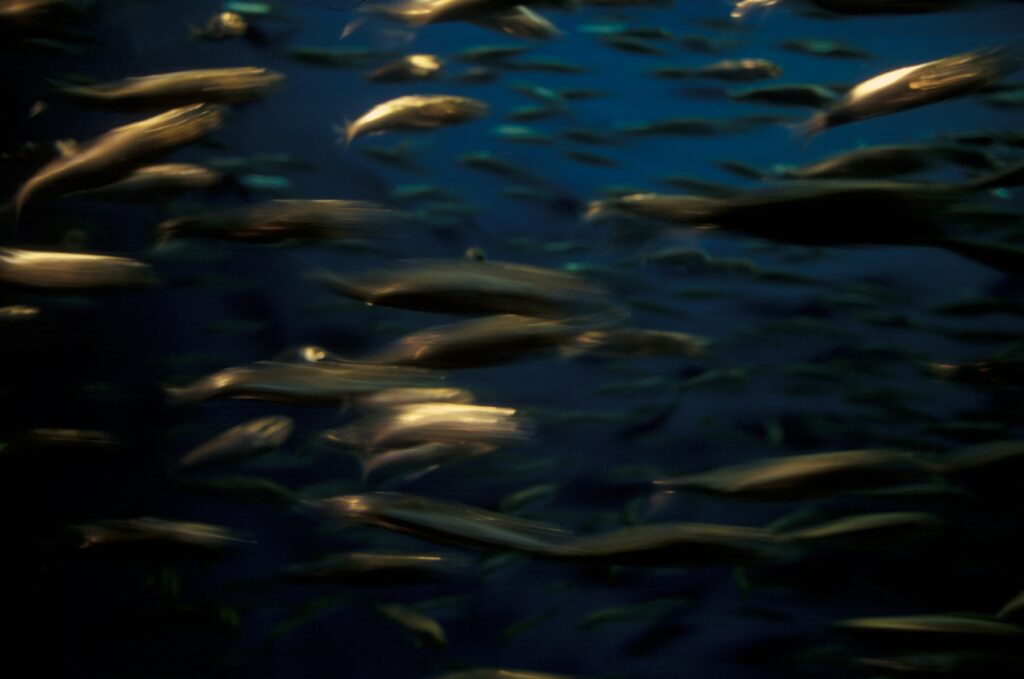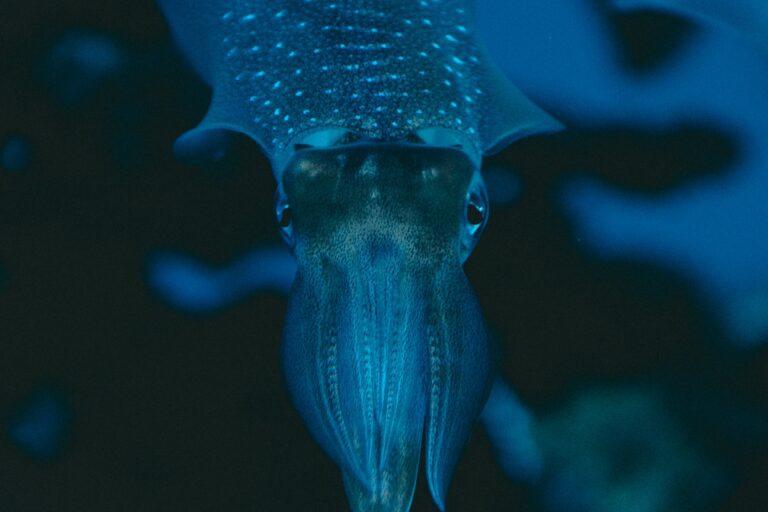Cephalopods, including octopuses, squid, and cuttlefish, have long fascinated scientists and laypeople alike with their mysterious behavior and remarkable adaptations. While they may seem like creatures from another world with their complex appearances and behaviors, recent research has unveiled the astonishing intelligence lurking within their sleek bodies. From problem-solving prowess to sophisticated communication methods, cephalopods challenge our understanding of what it means to be intelligent. In this article, we delve into the surprising intelligence of these fascinating creatures, exploring their evolutionary journey, cognitive abilities, and the implications of their intelligence for our understanding of the natural world.
Evolutionary History
Cephalopods, including octopuses, squids, and cuttlefish, have a long and fascinating evolutionary history dating back over 500 million years. These creatures belong to the phylum Mollusca and have evolved to become one of the most enigmatic and intelligent groups of invertebrates in the ocean.
Ancient Origins:
The evolutionary journey of cephalopods can be traced back to ancient marine ancestors such as the nautiloids, which first appeared in the seas around 500 million years ago during the Cambrian period. These early cephalopods had simple, straight shells and likely had limited mobility compared to their modern counterparts.
Diversification and Adaptations:
Over millions of years, cephalopods underwent significant diversification, with various species evolving unique adaptations to thrive in different marine environments. The development of complex eyes, agile tentacles, and sophisticated camouflage mechanisms allowed them to become highly efficient predators and evade potential threats in the oceanic ecosystem.
Extinction Events:
Throughout their evolutionary history, cephalopods faced several extinction events, including the Permian-Triassic and Cretaceous-Paleogene mass extinctions. Despite these challenges, certain cephalopod lineages persisted and continued to evolve, leading to the diverse array of species observed today.
Adaptations for Intelligence
Cephalopods possess a remarkable array of adaptations that contribute to their exceptional intelligence, allowing them to solve complex problems, exhibit sophisticated behaviors, and adapt to changing environments.
Camouflage and Mimicry:
One of the most striking adaptations of cephalopods is their ability to change color, texture, and even shape to blend seamlessly with their surroundings or mimic other organisms. This camouflage not only helps them avoid predators but also enables them to ambush prey more effectively.
Flexible Learning:
Cephalopods exhibit remarkable learning capabilities, including observational learning, habituation, and associative learning. This flexibility allows them to adapt their behaviors based on past experiences and environmental cues, enhancing their survival in diverse habitats.
Complex Communication:
Despite lacking vocal cords, cephalopods communicate through a variety of visual signals, such as body patterns, postures, and arm movements. These complex communication methods facilitate social interactions, mating rituals, and hierarchical structures within cephalopod populations.
Brain Structure and Complexity
The intelligence of cephalopods is intricately linked to the structure and complexity of their brains, which exhibit several unique features compared to other invertebrates.
Large Brain-to-Body Ratio:
Cephalopods possess relatively large brains compared to their body size, rivaling those of some vertebrates. This high brain-to-body ratio suggests a significant investment in neural processing power, supporting their complex cognitive abilities.
Distributed Neural Network:
Unlike vertebrates with centralized nervous systems, cephalopods have a distributed neural network, with clusters of neurons (ganglia) distributed throughout their bodies. This decentralized organization contributes to their ability to perform multiple tasks simultaneously and may enhance their resilience to injury.
Neuroplasticity:
Cephalopod brains exhibit remarkable neuroplasticity, allowing them to reorganize neural connections in response to new experiences or environmental changes. This adaptability enhances their learning and memory capabilities, enabling them to continually refine their behaviors throughout their lives.
Problem-Solving Abilities
Cephalopods, particularly octopuses, squids, and cuttlefish, are renowned for their exceptional problem-solving abilities, which are evident in various aspects of their behavior and cognitive skills.
Examples of Problem-Solving in Octopuses
Octopuses have demonstrated remarkable problem-solving skills in laboratory settings and in their natural habitats. One famous example involves octopuses escaping from enclosed tanks by unscrewing lids, squeezing through small openings, or using objects as tools to aid in their escape. These behaviors highlight their ability to analyze their environment, devise strategies, and execute complex actions to achieve their goals. Additionally, octopuses have been observed using coconut shells and discarded objects as shelter, demonstrating their innovative problem-solving capabilities.

Studies on Squid Intelligence
While research on squid intelligence is relatively limited compared to octopuses, studies have revealed intriguing insights into their cognitive abilities. Squids exhibit advanced spatial learning and memory, allowing them to navigate complex environments and locate prey efficiently. In laboratory experiments, squids have displayed learning behaviors, such as associative learning and habituation, indicating a capacity for adaptive responses to stimuli. Furthermore, studies have shown that squids can communicate through dynamic body patterns and visual signals, suggesting a level of social intelligence within squid populations.
Cuttlefish Camouflage and Problem-Solving
Cuttlefish are masters of camouflage and possess sophisticated problem-solving skills related to their ability to blend into their surroundings. These cephalopods can rapidly change their skin color, texture, and pattern to match their environment or mimic other objects, effectively camouflaging themselves from predators and prey alike. Cuttlefish also exhibit strategic hunting behaviors, such as using visual distractions and decoys to ambush prey. In laboratory experiments, cuttlefish have demonstrated problem-solving abilities by navigating through mazes, retrieving food from complex apparatuses, and even opening jars to access hidden prey. Their adeptness at camouflage and problem-solving underscores the complexity of their cognitive capabilities and their adaptive prowess in diverse marine environments.
Social Behavior and Communication
Cephalopods exhibit a wide range of social behaviors and communication methods, which play crucial roles in their interactions with conspecifics, predator avoidance, mate selection, and territorial defense.
Observations of Social Interactions
Despite their reputation as solitary creatures, cephalopods, particularly octopuses and cuttlefish, have been observed engaging in various social interactions in both laboratory and natural settings. These interactions may include courtship rituals, territorial disputes, mating displays, and hierarchical structures within populations. For example, male cuttlefish often display complex mating behaviors, such as changing color patterns and postures to attract females and intimidate rivals. Additionally, octopuses have been observed engaging in playful interactions and even sharing dens with conspecifics, suggesting a degree of social tolerance and cooperation among individuals.
Communication Methods Among Cephalopods
Cephalopods employ a diverse array of communication methods to convey information and interact with other individuals. Visual signals, including body patterns, color changes, and postures, are among the most prominent communication mechanisms used by cephalopods. These visual displays serve various purposes, such as mating displays, aggression signals, and camouflage strategies. Additionally, cephalopods may use tactile cues, such as gentle touching or arm movements, to communicate with conspecifics or convey information about their intentions. Recent research also suggests that cephalopods may utilize chemical signaling, releasing pheromones or other chemical cues to communicate with potential mates or establish territory boundaries.
Cooperative Behavior
While cephalopods are generally perceived as solitary hunters, instances of cooperative behavior have been observed, particularly among certain species of octopuses and cuttlefish. Cooperative hunting, where individuals collaborate to capture elusive prey or defend against predators, has been documented in both laboratory and field studies. For example, in certain octopus species, individuals may coordinate their movements to flush out prey from hiding spots or work together to dismantle defensive structures erected by potential prey. Additionally, some cephalopods exhibit temporary aggregations or “schools” during mating seasons, where individuals come together for reproductive purposes before dispersing once again. These observations suggest that while cephalopods may primarily lead solitary lives, they are capable of engaging in cooperative behaviors when circumstances warrant it.
VIDEO CREDITS NATURAL WORLD FACTS



